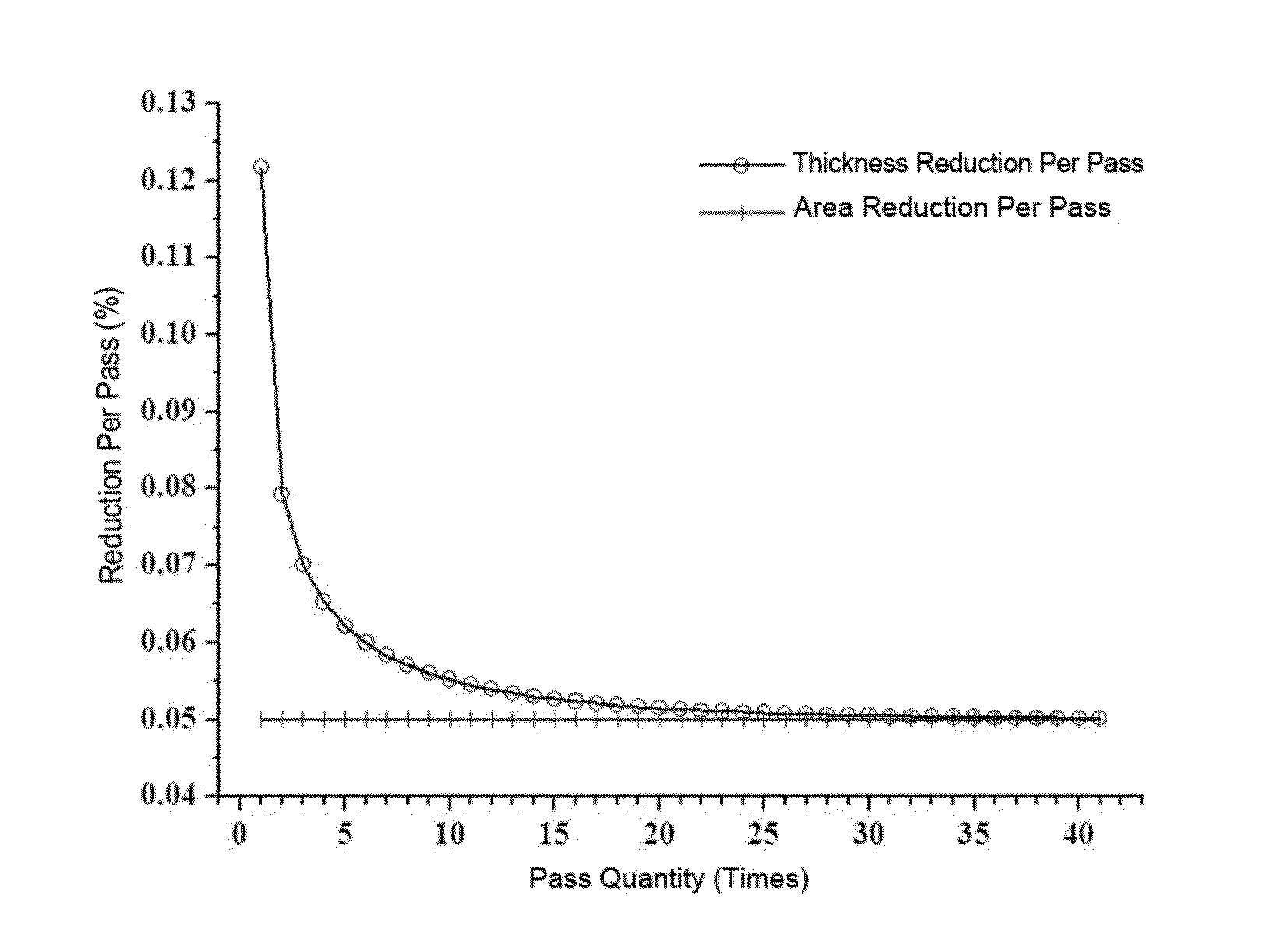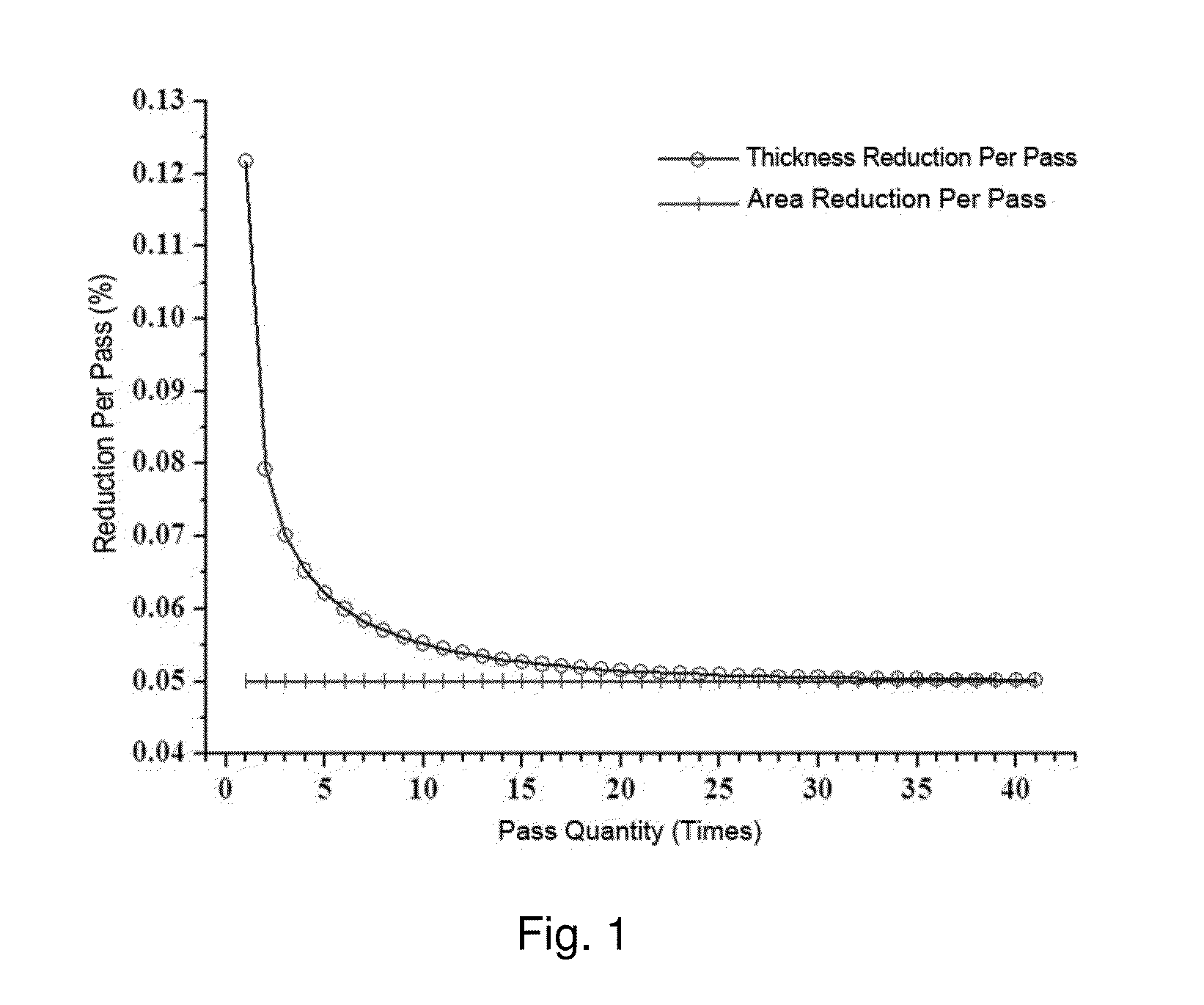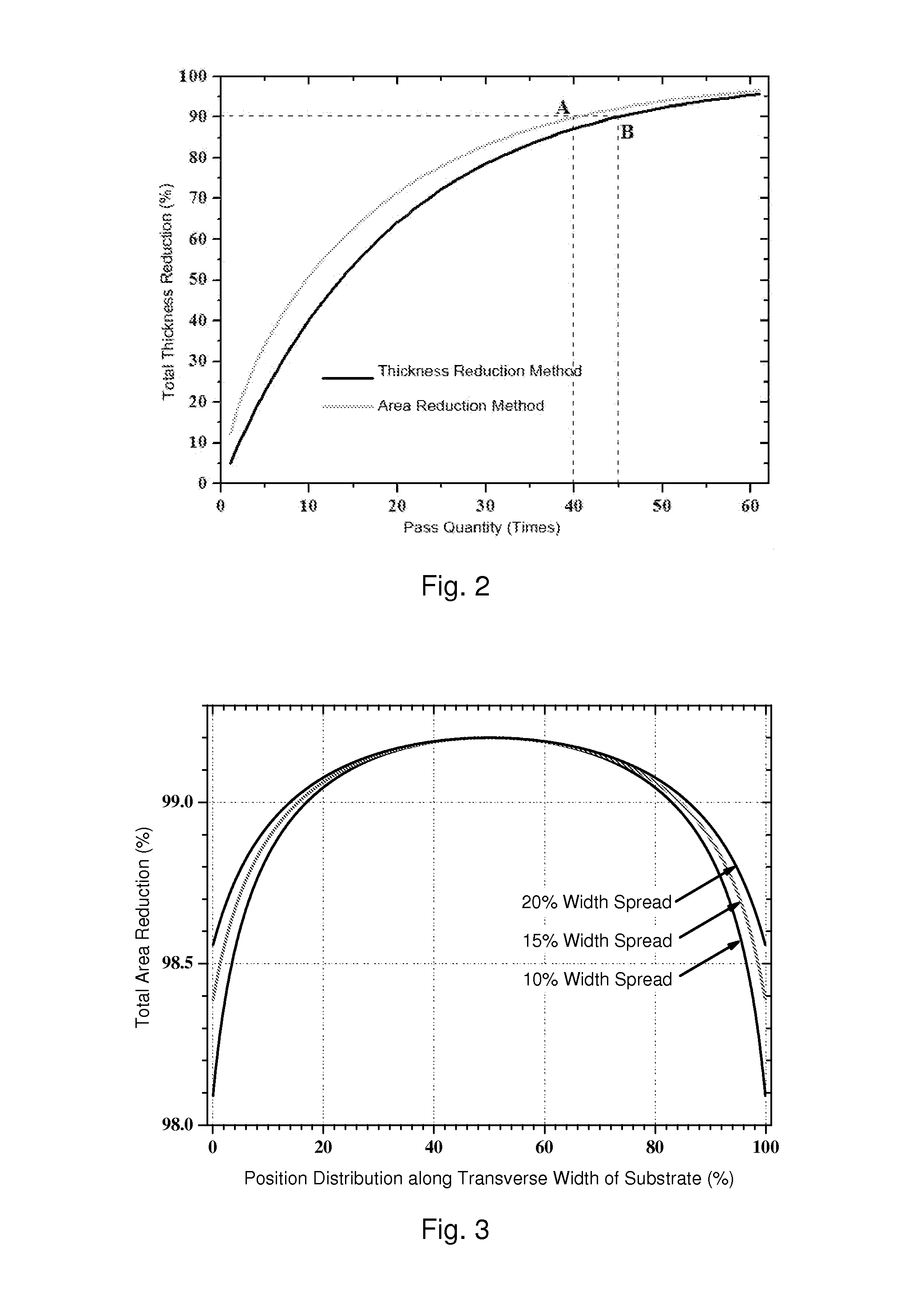Method of rolling niw alloy tapes for coated conductors
a technology of coated conductors and alloy tapes, which is applied in the direction of metal rolling, metal rolling arrangements, etc., can solve the problems of increased workload and material loss, increased energy consumption, and inability to perform annealing treatment during this process, and achieve uniform quality distribution
- Summary
- Abstract
- Description
- Claims
- Application Information
AI Technical Summary
Benefits of technology
Problems solved by technology
Method used
Image
Examples
embodiment 1
[0031]Using the cylindrical NiW alloy ingot (the content of W is Sat. %) in diameter of 10 mm as an initial ingot, the rolling is carried out back and forth in according to the thickness reduction per pass in Table 1 and rolling is stopped when the thickness is 100 μm, and at that moment, the total area reduction is about 98.1%, and thus the NiW alloy tape is obtained after edge trimming treatment.
[0032]An X-ray diffractometer is used to measure texture on the surface of the annealed NiW alloy tape to obtain the pole figure (111) of the surface of the tape as shown in FIG. 4. The pole figure shows that the surface of the NiW alloy tape has highly-concentrated cubic texture and can meet the requirement of the YBCO superconducting material on the flexible metal tape.
embodiment 2
[0033]Using the cylindrical NiW alloy ingot (the content of W is 7 at. %) in diameter of 12 mm as an initial ingot, rolling is carried out back and forth along in according to the pass thickness reduction in Table 1 and rolling is stopped when the thickness is 60 μm, and at that moment, the total area reduction is about 99.0%, and thus the NiW alloy tape is obtained after edge trimming treatment.
[0034]An X-ray diffractometer is used to measure texture on the surface of the annealed NiW alloy tape to obtain the pole figure (111) of the surface of the tape as shown in FIG. 5. The pole figure shows that the surface of the NiW alloy tape has highly-concentrated cubic texture and can meet the requirement of the YBCO superconducting material on the flexible metal tape.
[0035]Table 1 shows the approximate thickness reduction per pass which is obtained by calculation when the area reduction per pass of the cylindrical NiW alloy ingot is retained at 5%.
TABLE 1ReductionAreaThicknessArea Reduct...
PUM
| Property | Measurement | Unit |
|---|---|---|
| diameter | aaaaa | aaaaa |
| thickness | aaaaa | aaaaa |
| thickness | aaaaa | aaaaa |
Abstract
Description
Claims
Application Information
 Login to View More
Login to View More - R&D
- Intellectual Property
- Life Sciences
- Materials
- Tech Scout
- Unparalleled Data Quality
- Higher Quality Content
- 60% Fewer Hallucinations
Browse by: Latest US Patents, China's latest patents, Technical Efficacy Thesaurus, Application Domain, Technology Topic, Popular Technical Reports.
© 2025 PatSnap. All rights reserved.Legal|Privacy policy|Modern Slavery Act Transparency Statement|Sitemap|About US| Contact US: help@patsnap.com



